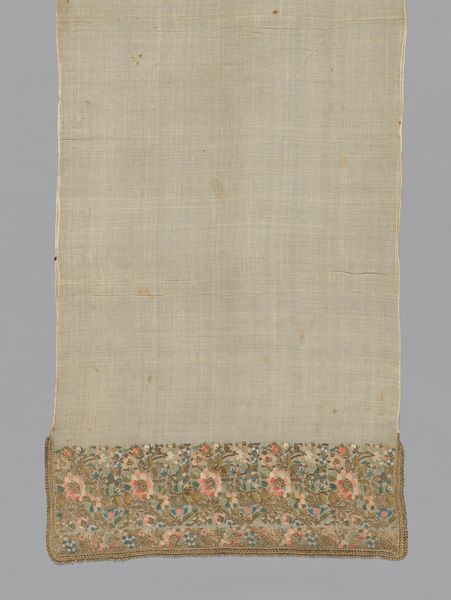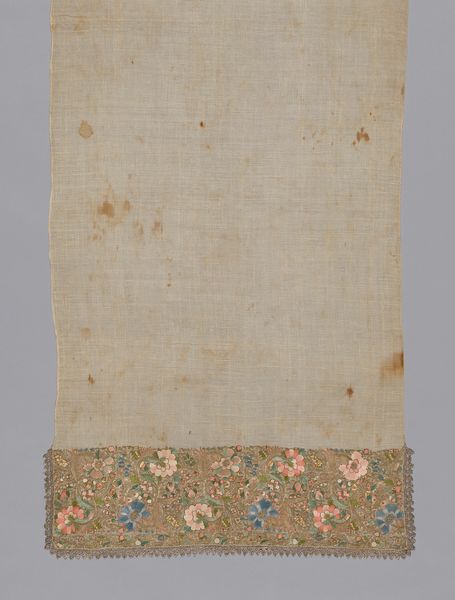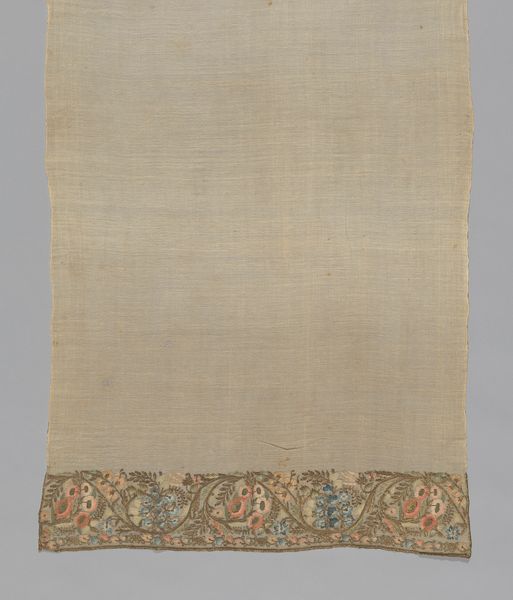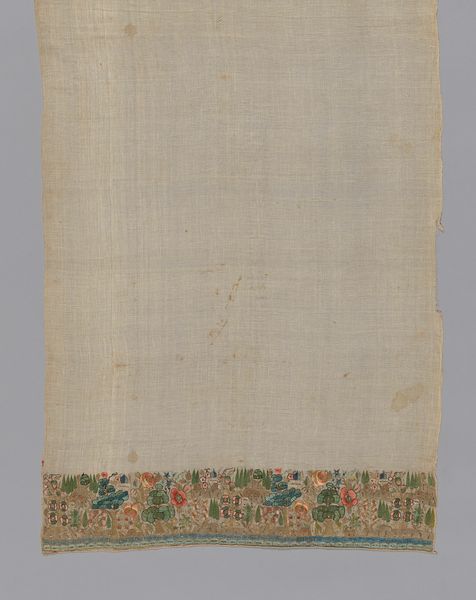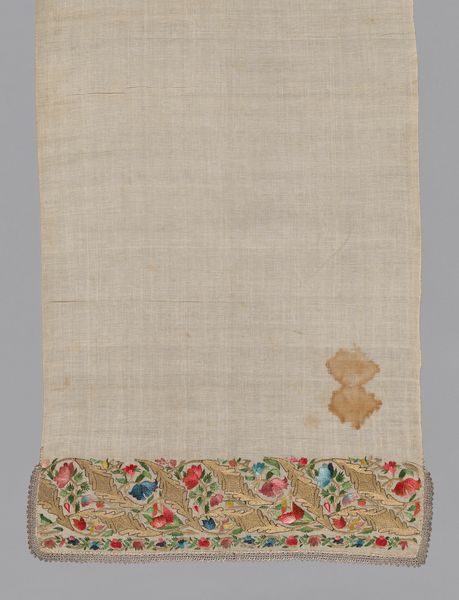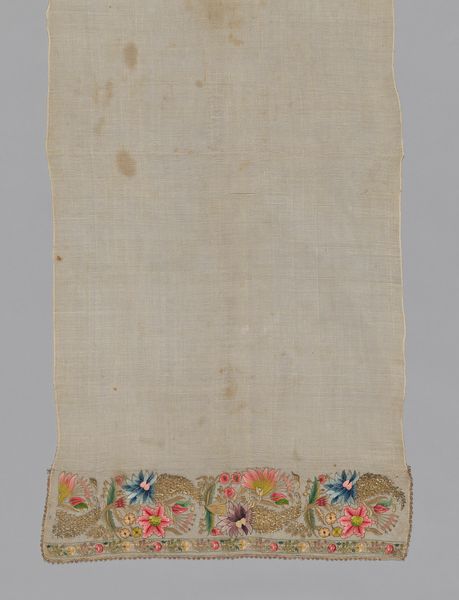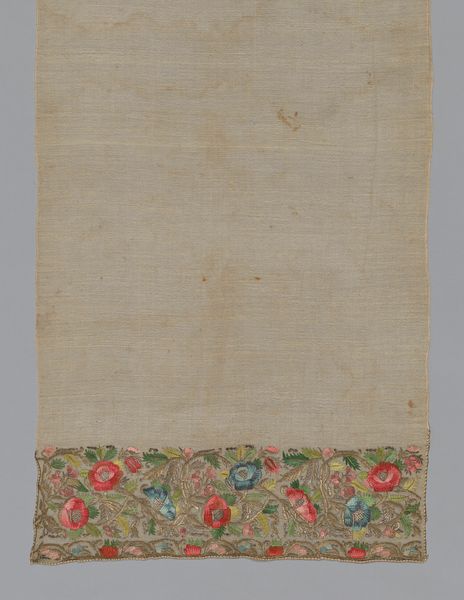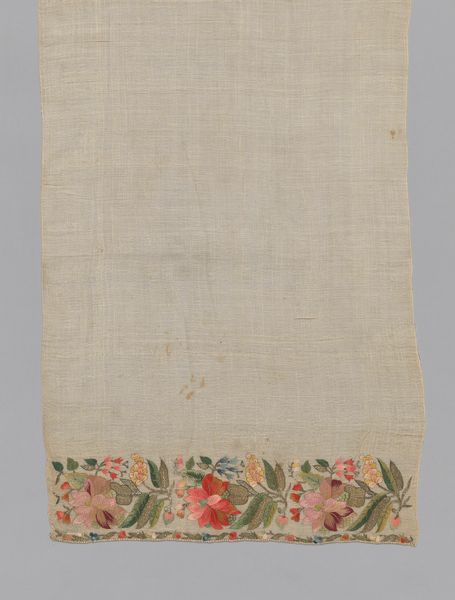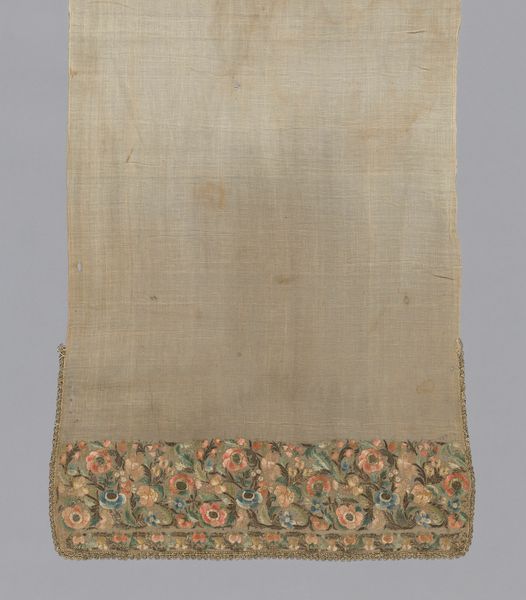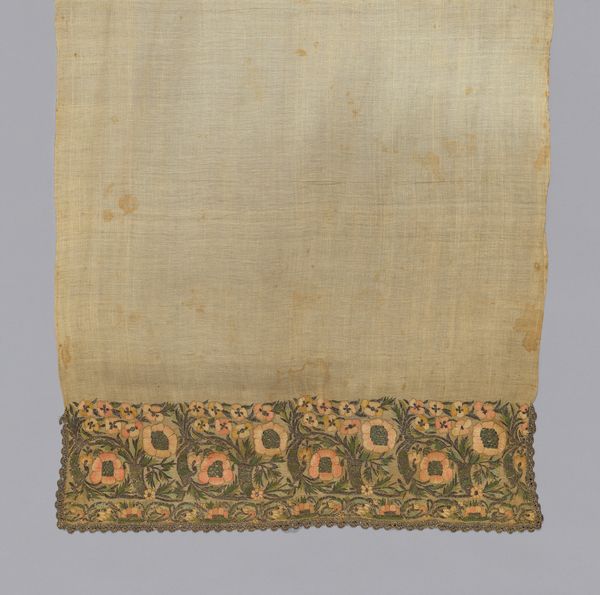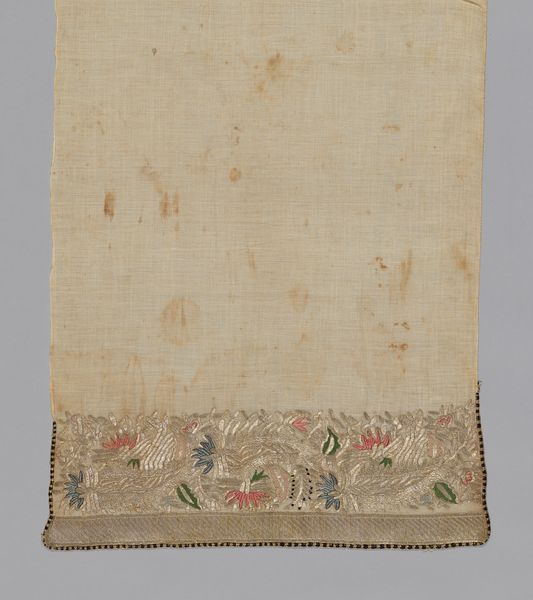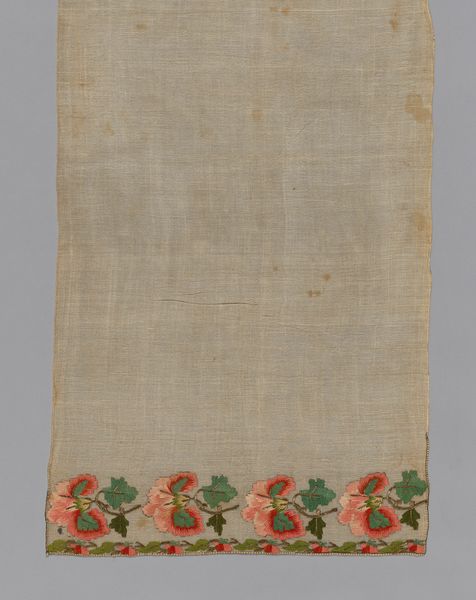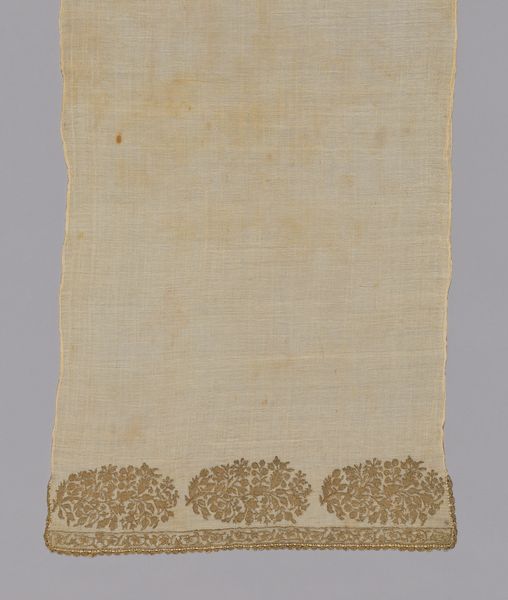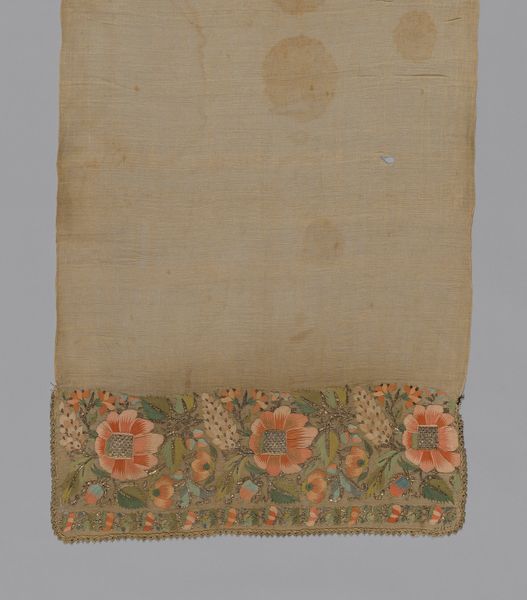
weaving, textile
#
photo of handprinted image
#
aged paper
#
homemade paper
#
water colours
#
pastel soft colours
#
weaving
#
textile
#
pastel colours
#
text
#
soft and bright colour
#
watercolour bleed
#
watercolour illustration
#
watercolor
Dimensions: 136.6 × 52.7 cm (53 3/4 × 20 3/4 in.)
Copyright: Public Domain
Editor: This is "Curtain Panel," created in 1905 by John Scott Bradstreet, using weaving and textile techniques. I am immediately struck by its delicate, almost fragile appearance. How should we approach an interpretation of it? Curator: From a materialist perspective, let’s consider this “fragility” you perceive not just aesthetically, but economically. Textiles, even decorative ones, were often produced within specific labor conditions. How might the social context of early 20th-century textile production inform our understanding of this panel? Editor: You mean thinking about who would have made this, and under what conditions? I imagine something like this would have required quite skilled labor. Curator: Exactly. Bradstreet was known for high-end, handcrafted interiors. This panel, therefore, signifies more than just decoration. It embodies a particular mode of production, consumption, and perhaps even resistance to industrial standardization. Consider the Arts and Crafts movement’s focus on artisanal skill as a conscious counterpoint to factory-made goods. How does that tension manifest here, in this object? Editor: So, this panel could be seen as making a statement through the very materials and methods used to create it? Like, "we value hand-crafted quality over mass production?" Curator: Precisely. And that statement carries social and economic implications. What do you make of the seemingly simple design given this context? Editor: Well, I initially just saw it as decorative, but now I am also wondering if that stylized flower maybe signals a kind of return to nature that designers at that time were pushing against the Industrial Revolution. Curator: Interesting! It really changes how we see it once we examine the material and labor that went into creating it, right? I appreciate your willingness to rethink your original observation. Editor: Me too. I'll definitely be keeping an eye on the materiality of artworks from now on. Thanks!
Comments
No comments
Be the first to comment and join the conversation on the ultimate creative platform.
